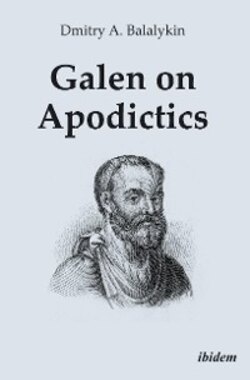Оглавление
Dmitry A. Balalykin. Galen on Apodictics
Foreword
Introduction
Chapter 1. Philosophical basis of Galen’s medical doctrines. 1.1 Galen’s perspective on the Hippocratic tradition
1.2 The significance of the doctrines of Plato and Aristotle in shaping Galen’s views
1.3 The doctrine of Homoiomereia as the foundation of Galen’s views on the microstructure of tissue
Chapter 2. Understanding Galen’s clinical experience and apodeixis. 2.1 The semiotics of diseases. Theory of pathogenesis as a reflection of the principle of causality
2.2A comprehensive understanding of philosophical theory and medical practice
2.3The unity of mind and body in Galen’s medicine and philisophy
Chapter 3. Anatomical dissections as evidence in a philosophical polemic. 3.1 Galen’s method of investigation
3.2The Empiricist school as the opponent of the Hippocratic tradition
3.3The structure of proof in Galen
3.4Galen’s understanding of the natural functions of the body as a realisation of the teleological principle
3.5Galen’s clinical practice and physiological experiments
Conclusion
Bibliography
Отрывок из книги
ibidem-Press, Stuttgart
Introduction
.....
This is why Galen focuses on the views expressed by Plato, particularly the concept of the psychosomatic unity of the human. It should be clear to any historian of medicine that without the appropriate evaluation of the soul, the body and their interactions, there could be no integrated approach to the diagnosis of illness and its treatment.
Great danger lurks in wait for the scientist when historical and philosophical inquiry is focused solely on specific details of the professional work itself and sets out to answer only the questions: “who discovered?”, “how did they discover it?” The question why a particular scientist at a certain time and place made their discovery is not even considered. And it is not considered because the medical historian lacks the necessary package of general philosophical and general historical knowledge.
.....
